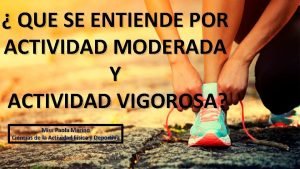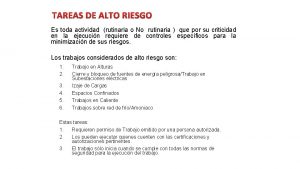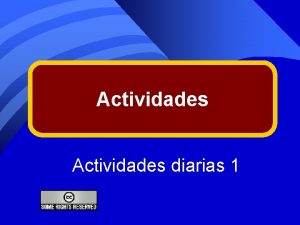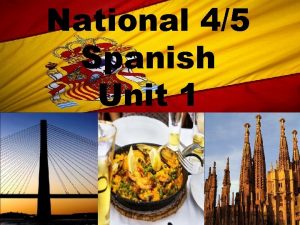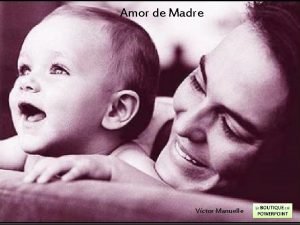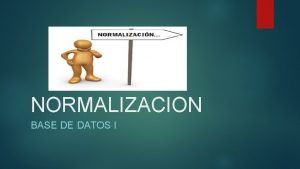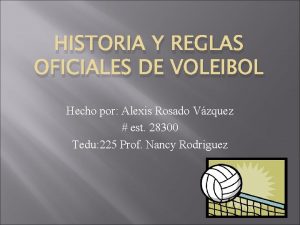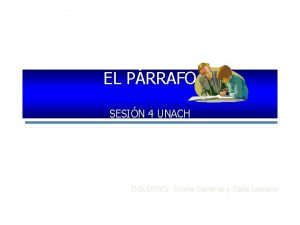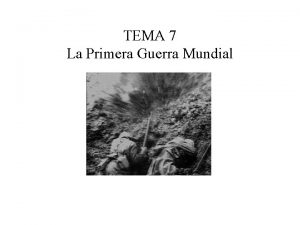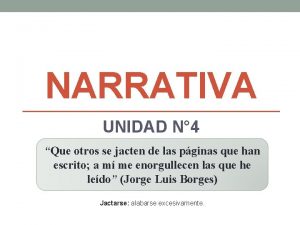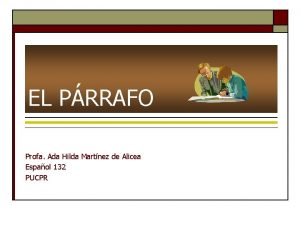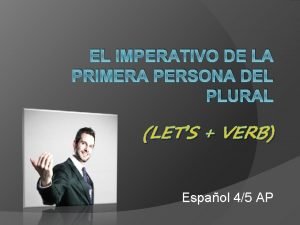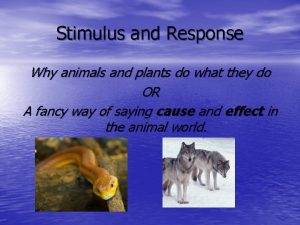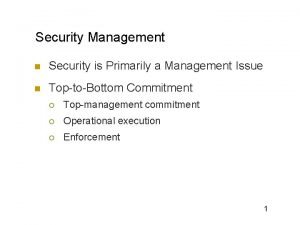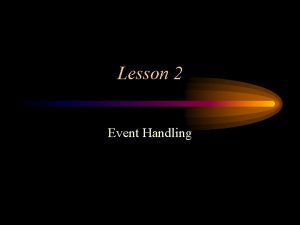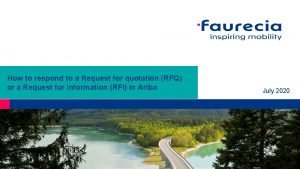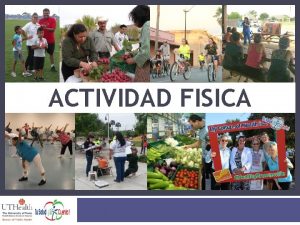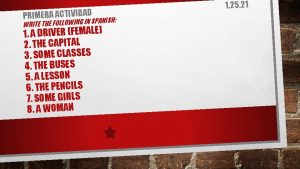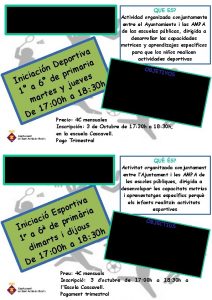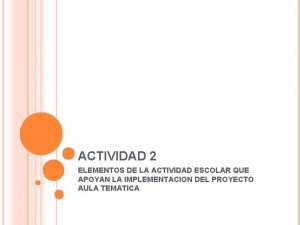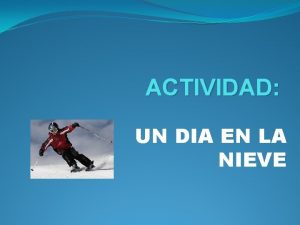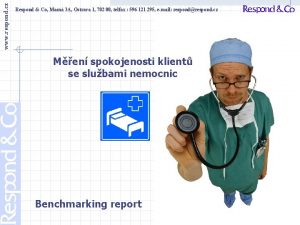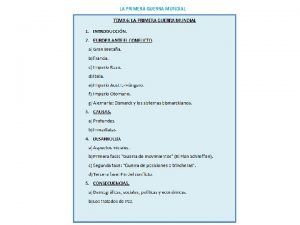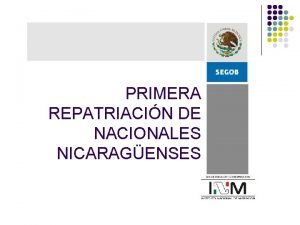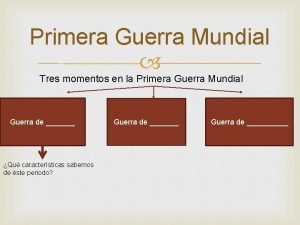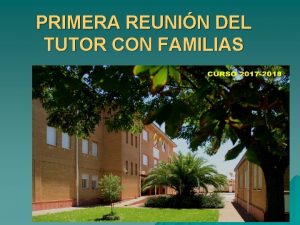Primera Actividad Respond to the following 1 Que























- Slides: 23

Primera Actividad Respond to the following. 1. ¿Que pasa primo(cousin)? _____________ 2. ¿A que horas se termina la escuela? _________ 3. ¿Como se siente el niño? | 4. ¿Como se siente la niña?

> Esta semana La Ropa > Vistazo: Perú

Camisa to s Vestido sc ne alo Falda or Traje Chaqueta Su ete r Blusa Pa nt Pantalones o c a Playera S Tacones Pantalones vaqueros

Abrigo Manga Bo lsa Bota Pantalones capris n B e o l a r b t u t a a n i e C m san r e dal Medias p i a o s r m a i e r b e s m l o u Traje de baño S P

De mo Bufanda Ar da et e a s m e e j d Mitones a a i l D l i u A ni q Moños a llo D m e pu a a g r nto i L e s t r a s a u C g a r Pa Floreado

Primera Actividad Dime porque el meme es chistoso. . .

Crucigrama* After you find the word, also write the English translation next to the Spanish term. Ex: La Ropa = Clothes > EXTRA CREDIT – Bring fashion magazine to class to share.

Creating simple sentences about clothes in Spanish For descriptions we often use the words SER (to be) and lucir (to Look) [Clothing item in Spanish + verb + adjective]

Common clothing styles, designs and sizes

The verb USAR in Spanish USAR (to use/to wear) is used for talking about clothes in Spanish. USAR is often used in gerund form as USANDO after the verb ESTAR.

Talking about prices in Spanish To ask and say we use the Spanish verb VALER and COSTAR

Important phrases and questions…

Vendedora: Disculpe ¿Puedo ayudarle en algo? Comprador: Si, estoy buscando un regalo para mi esposa, algo que ella pueda usar… Vendedora: Tenemos vestidos muy bonitos como este… Comprador: Ya veo. ¿Cuánto vale este vestido? Vendedora: Este vestido vale 50 dólares. Comprador: aja… Creo que es un poco caro y no me gusta mucho el color. ¿Cuánto cuestan estas blusas y esas faldas? Vendedora: Las blusas cuestan 20 dólares y las faldas 25. Comprador: La blusa y la falda me gustan más, y creo que combinan con sus zapatos. Vendedora: Entonces a ella le va a encantar. También vendemos ropa para caballeros como trajes, camisas, camisetas y corbatas. After listening to Comprador: Gracias, pero creo que solo llevaré estas the conversation, dos cosas answer the question Preimera Actividad* Extendida Link


Nombre: ___________ Hora: ______ Conteste las preguntas. 1. What is the capital of Perú? ________________________ 2. What is the official language of Perú? ________________________ 3. Which ocean lies to the west of Perú? ________________________ 4. Which currency is used in Perú? ____________________________ 5. Name one of the clothing items used in Perú (We talked about 4) _________________________ 6. What vegetable originated from Perú? __________________________ 7. What are the lines in the dirt found in the desert of Perú? __________________________ 8. ¿Si/No? 300 people died in a soccer riot in 1964. Si / No {Circle one} ________________________________ 9. ¿Si/No? Macho Pichu is on the beach in the southwest part of the country. Si / No {Circle one} __________________________________ 10. ¿Si/No? Caral is a type of vegetable found in the mountain region of the country. Si / No TELL ME WHY THIS IS CORRECT / NOT CORRECT.

EX: Actividad, la ropa. El hombre tiene una corbata verde. Tiene puntos blancos. Me gusta como va con sus pantalones. Los pantalones son color blanco, son muy sencillos. Su sombrero flexible (fedora) es negro. Me gusta mucho porque se luce mas a la moda el traje. Creo que los zapatos son muy casuales y cómodos. ¿Cuanto vale un traje asi? Make sure to write your name & period on the back.

Primera Actividad ¿Sí o no? Correct any wrong information. 1. José es alto. 2. Sandra y José son amigos 3. José es norteamericano 4. José es colombiano y Sandra es Colombiana también.

> 1. The potato is originally from Peru and they produce over 3000 varieties > 2. The world's worst soccer riot occurred in 1964 during a Peru v Argentina match in Lima after an unpopular decision by the referee. It ended with 300 fans killed and more than Quick facts 500 injured Capital: Lima > 3. One of the highest train pass in the Population (approx): 30, 475, 144 world is in Ticlio, Peru at 4815 meters Area: 1, 285, 216 sq km above sea level (15793 feet). Official language: Spanish > 4. You can find 28 different climates in Religion: 80% Roman Catholic Peru, making it to be one of the 5 biggest 12. 5% Protestants biodiversities in the world. President: Ollanta Humala > 5. Caral, just 114 miles north of Lima, Government: Democratic is the oldest discovered city in the Currency: Peruvian Nuevo Sol Americas (between 2600 BC and 2000 BC). Pe rú

• The geoglyphs, known as Nazca Lines, were spotted from the air in 1939 • Some 700 geoglyphs are thought to have been drawn by the ancient Nazca people between the first and sixth centuries • The new lines were revealed following gales and sandstorms in Peru • Experts believe one of the geoglyphs shows a 196 ft-long (60 metre) snake • Another appears to show a camelid, zig-zag lines and an unidentified bird • The site stretches about 500 Miles. Nazca Lines – Nazca Desert

7, 000 ft. above sea level on a small hilltop between the Andean Mountain Range, The Incan built structure has been deemed the “Lost Cities”, unknown until its relatively recent discovery in 1911. Archaeologists estimate that approximately 1200 people could have lived in the area, though many theorize it was most likely a retreat for Incan rulers. Due to it’s isolation from the rest of Peru, living in the area full time would require traveling great distances just to reach the nearest village. Separated into three areas - agricultural, urban, and religious - the structures are arranged so that the function of the buildings matches the form of their surroundings. The agricultural terracing and aqueducts take advantage of the natural slopes; the lower areas contain buildings occupied by farmers and teachers, and the most important religious areas are located at the crest of the hill, overlooking the lush Urubamba Valley thousands of feet below. Macho Pichu. One of the 7 wonders of the world

Lliclla - square woven cloth that covers the back and shoulders. It is secured at the front using a tupu (straight pin), when folded and pinned about the shoulders it acts as a small heavy shawl, which keeps the women warm in the chilly Andean air. Polleras - are colourful skirts that are also worn by women and are made from hand-woven wool. Ajotas - are sandals worn both men and women in rural areas of Peru and by poorer people in Lima. They are made from recycled tyres and are inexpensive Chullo – have been used to make in the Andean Mountain region by indigenous peoples for thousands of years, wearing different types and colors has a significance among the Andean natives.

Peru is located in the central part of South America and borders on the north with Ecuador and Colombia, on the east with Brazil and Bolivia, on the south with Chile and on the west with the Pacific Ocean. The Peruvian territory covers an area of 1, 285. 216 square kilometers. More than half of the Peruvian population (54. 6%) lives on the coast. The Andean region is home to 32%, whereas only 13. 4% of the total population lives on the Amazonian plains. Lima is the capital city of the Republic. > Size: About 1, 285, 216 km 2, slightly smaller that Alaska > Capital: Lima Metropolitana, 9, 585, 636 > Other large cities: Arequipa 852, 807, Trujillo 7779, 873, Cusco 413, 006 > Elevation: Highest point in Nevado Huascaran 6, 768 m CARAL GEO * GRAPHY Nazca Lines

Ticket out the door: Draw the flag of Perú
 Actividad moderada ejemplo
Actividad moderada ejemplo Actividad rutinaria y no rutinaria
Actividad rutinaria y no rutinaria Actividades que nos gusta hacer
Actividades que nos gusta hacer Señalizaciones intratextuales
Señalizaciones intratextuales Que emocionante actividad 16 answers
Que emocionante actividad 16 answers Amor de madre la que sufre si me ve sufriendo
Amor de madre la que sufre si me ve sufriendo Que es normalizacion base de datos
Que es normalizacion base de datos Introducción del voleibol
Introducción del voleibol La primera vez que la vi caminaba cabizbaja
La primera vez que la vi caminaba cabizbaja Sistema de alianzas primera guerra mundial
Sistema de alianzas primera guerra mundial La persona gramatical
La persona gramatical Párrafos argumentativos
Párrafos argumentativos Primera persona plural
Primera persona plural Animal response to stimuli
Animal response to stimuli Plan protect respond cycle
Plan protect respond cycle Reply letter for inquiry
Reply letter for inquiry Object respond to an event by writing
Object respond to an event by writing The buying process starts when the buyer recognizes a
The buying process starts when the buyer recognizes a Txv equalizer line
Txv equalizer line How to respond to teacher feedback
How to respond to teacher feedback Ni hăo
Ni hăo Ariba faurecia
Ariba faurecia The plan-protect-respond cycle
The plan-protect-respond cycle Producers respond to consumers' positive economic votes by
Producers respond to consumers' positive economic votes by
